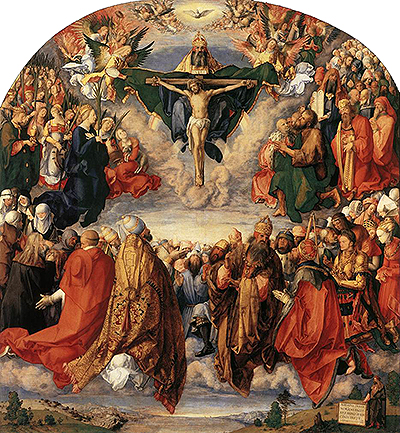This complex altarpiece was completed by Albrecht Durer in 1511 and can now be found at the Kunsthistorisches Museum in Vienna, Austria. It is now as the Adoration of the Trinity and also sometimes as All Saints.
This oil on poplar panel has been given several different names in the centuries that have passed since Durer dominated the Northern Renaissance. Adoration of the Trinity is sometimes refered to as All Saints, Allerheiligenbild or Landauer Altar (Landauer Altarpiece). The style and scale immediately points to the Renaissance era, where huge installations of art were commissioned in order to decorate the interiors of religious buildings across the European continent. Most famously, of course, was the Sistine Chapel which enlisted the help of countless artists in order to amaze its visitors. Raphael and Michelangelo were just two of these. Matthäus Landauer of Nuremberg was responsible for providing this commission.
It was intended for a chapel dedicated to the Holy Trinity and All the Saints, hence the content found in the finished altarpiece. It took Durer around three years to complete this painting, although he would not have been working solely on this project during that time. The finished piece is incased in a sculptured frame which contains a coat of arms and a scene from the Last Judgement. The coat of arms used is that of the Landauer family who generously paid for this beautiful artwork for the benefit of their charitable institution.The composition features Jesus Christ, God and the Holy Spririt represented as a dove. There is then a plethora of cherubs circling these figures in the clouds, whilst a gathering of saints can be seen covering most of the bottom half of the painting.
The Kunsthistorisches Museum in Vienna also holds work by the likes of Raphael, Pieter Bruegel, Jan van Eyck, Vermeer, Caravaggio and Diego Velazquez within its impressive collection.




